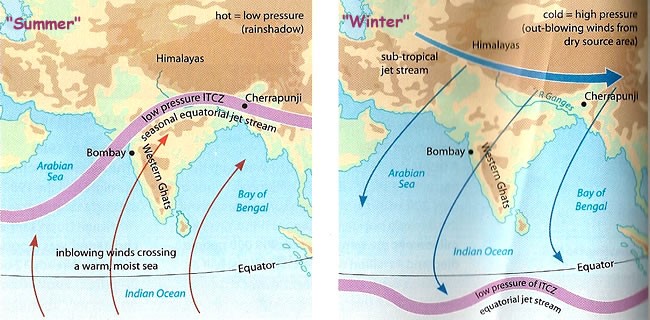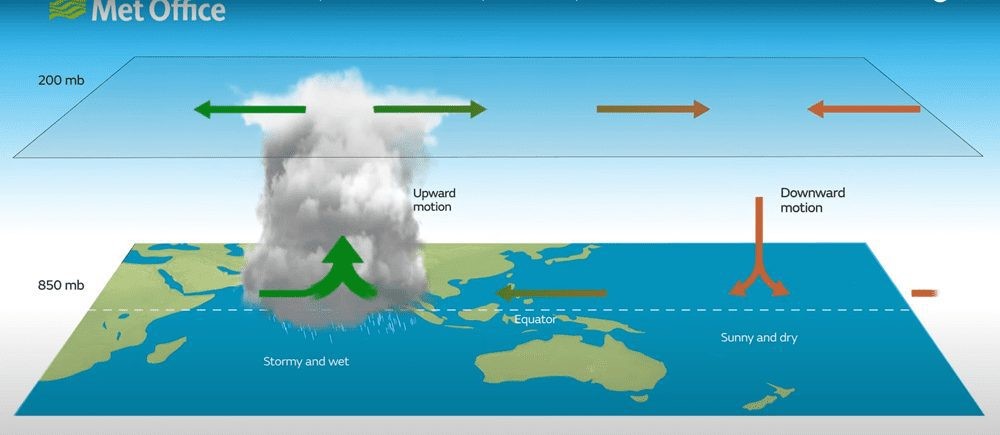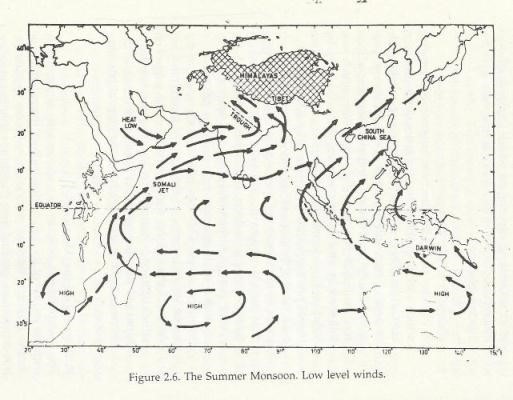Mains Syllabus: GS I - Important Geophysical phenomena such as earthquakes, Tsunami, Volcanic activity, cyclone etc.,
India Meteorological Department said the southwest monsoon set in over Kerala on May 24, a week ahead of its normal onset.

|
IMD’s Meteorological Criteria on Monsoon Onset |
|
This year, there has been a simultaneous onset over the entire Lakshadweep, Mahe (Puducherry), many parts of the Arabian Sea and the Bay of Bengal, along with monsoon winds reaching parts of southern Karnataka and Mizoram in northeast India.
In an El Niño year, the east is expected to be warming in the summer and the west to be cooling.
The pre-monsoon cyclone season in the North Indian Ocean, particularly the Bay of Bengal, typically occurs between April and May, characterized by the formation and intensification of tropical cyclones.


